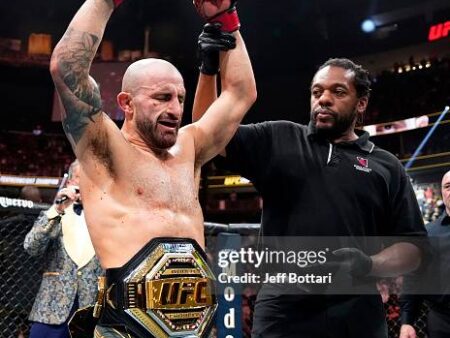Golf, by its very nature, is a solitary pursuit. It`s a contest against the course, against one`s own nerves, and ultimately, against a leaderboard populated by individual scores. Yet, every two years, this fiercely personal sport transforms into a battle of nations, where the camaraderie of a team triumphs over personal glory. This is the stage of the Ryder Cup, a spectacle where 12 of Europe`s finest face off against 12 of America`s best, trading individual accolades for collective pride.
More Than Just a Game: A Legacy Forged in Friendly Fire
Named after the English entrepreneur Samuel Ryder, who conceived the event in the 1920s, the Ryder Cup has evolved into one of the most anticipated and emotionally charged events in the sporting calendar. It`s not merely a golf tournament; it`s a testament to sportsmanship, strategy, and an intense, yet respectful, rivalry that captures the imagination of millions. Here, the usual hushed reverence of a golf course is replaced by roaring crowds, fervent chants, and an atmosphere more akin to a football stadium than a quiet Sunday stroll. The stakes? Not a winner`s cheque – a curious anomaly in an age of staggering prize purses – but rather the bragging rights, the prestige, and a rather ornate gold trophy.
The Crucible of Competition: Understanding the Ryder Cup Format
The magic of the Ryder Cup largely stems from its distinctive format: three days of grueling match play. Unlike stroke play, where every shot counts towards a cumulative total, match play pits golfers directly against each other, hole by hole. The goal isn`t the lowest score over 72 holes, but rather winning more holes than your opponent.
The competition unfolds in three distinct phases:
- Foursomes (Alternate Shot): A true test of partnership, two players from each team share a single ball, alternating shots until the hole is complete. This requires not just skill, but impeccable communication and trust, as one`s errant shot directly impacts their partner. It’s where golf becomes less about individual brilliance and more about synchronized effort – or synchronized disaster, depending on the day.
- Four-Balls (Best Ball): Here, partners each play their own ball, and the lowest individual score on each hole counts for the team. This format often leads to a flurry of birdies, as players can afford to be more aggressive, knowing their partner might cover them if they falter.
- Singles: The climactic final day sees all 12 players from each side go head-to-head in individual matches. This is where legends are made, comebacks are staged, and nerves are tested to their absolute breaking point. The entire contest often comes down to the final few pairings, delivering edge-of-your-seat drama.
Each match is worth one point; a tie earns each team half a point. The first team to accumulate more than 14 points out of a possible 28 secures the trophy. In the rare event of a 14-14 tie, the reigning champion retains the coveted prize – a rather polite way of saying the challengers still lose, even if they didn`t technically get beaten on the final day.
The Ultimate Incentive: Pride Over Paychecks
Perhaps the most intriguing aspect of the Ryder Cup, especially in professional sports, is the complete absence of prize money for the European contingent. The American players, while not receiving direct prize money for themselves, are allocated a sum (historically $500,000 per player, with a significant portion directed to charities of their choice) for their participation. For everyone involved, the true compensation lies in the indelible memory of representing their continent, battling alongside teammates, and etching their names into sporting folklore. It`s a refreshing reminder that some competitions are still about something larger than personal wealth.
Looking Ahead: The Road to Bethpage Black 2025
The next chapter in this storied rivalry is set for September 26-28, 2025, at the formidable Bethpage Black Course in Farmingdale, New York. Known for its “Warning: The Black Course Is An Extremely Difficult Course Which We Recommend Only For Highly Skilled Golfers” sign at the first tee, Bethpage Black promises a fittingly stern test for the world`s best. Fans unable to attend can catch every shot via comprehensive coverage on NBC, the Golf Channel, USA Network, and streaming on Peacock.
Both the USA and European teams will comprise six automatic qualifiers, based on rigorous points systems from various tournaments, and six captain`s picks. These selections are often the subject of intense debate and speculation, as captains weigh current form, course suitability, and team chemistry to forge a cohesive unit. The blend of established major champions and rising stars ensures a dynamic and unpredictable roster each time.
A Storied Past: History and Dominance
Historically, the United States holds a significant lead in the overall series, with 27 wins to Europe`s 15, alongside 2 ties. However, since the inclusion of continental European players in 1979 (the event was originally USA vs. Great Britain & Ireland), the competition has become far more balanced, with Europe often demonstrating remarkable prowess on home soil. The pendulum of power frequently swings, making each biennial contest a fresh and compelling narrative. The raw emotion, the clutch shots under immense pressure, and the unforgettable moments of sportsmanship (and sometimes, not-so-sportsmanlike conduct) are what cement the Ryder Cup`s place as a truly iconic event, year after year.
In an era where individual endorsement deals often overshadow the spirit of the game, the Ryder Cup stands as a vibrant, noisy, and utterly captivating anomaly – a true celebration of team golf, national pride, and the enduring power of competitive spirit. It reminds us that sometimes, the greatest victories are those shared amongst friends, against the backdrop of a continent.










